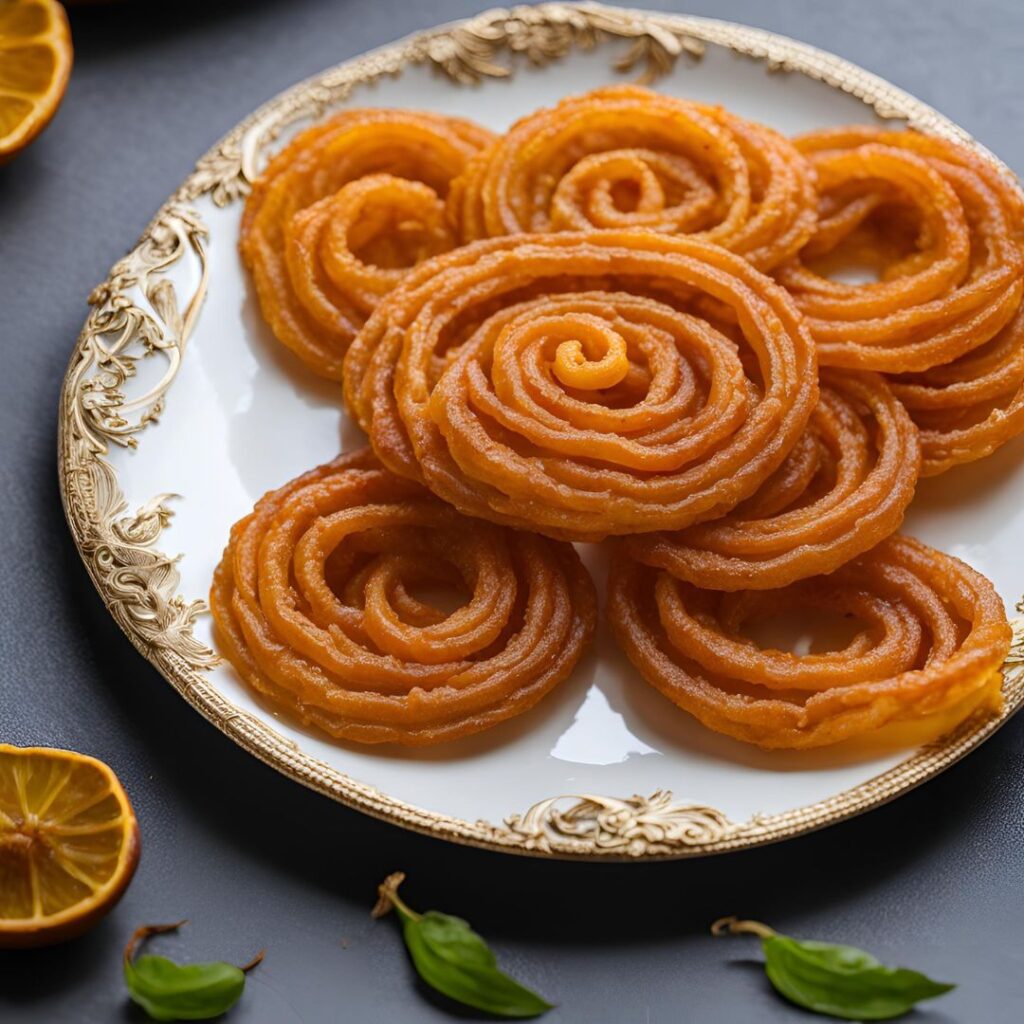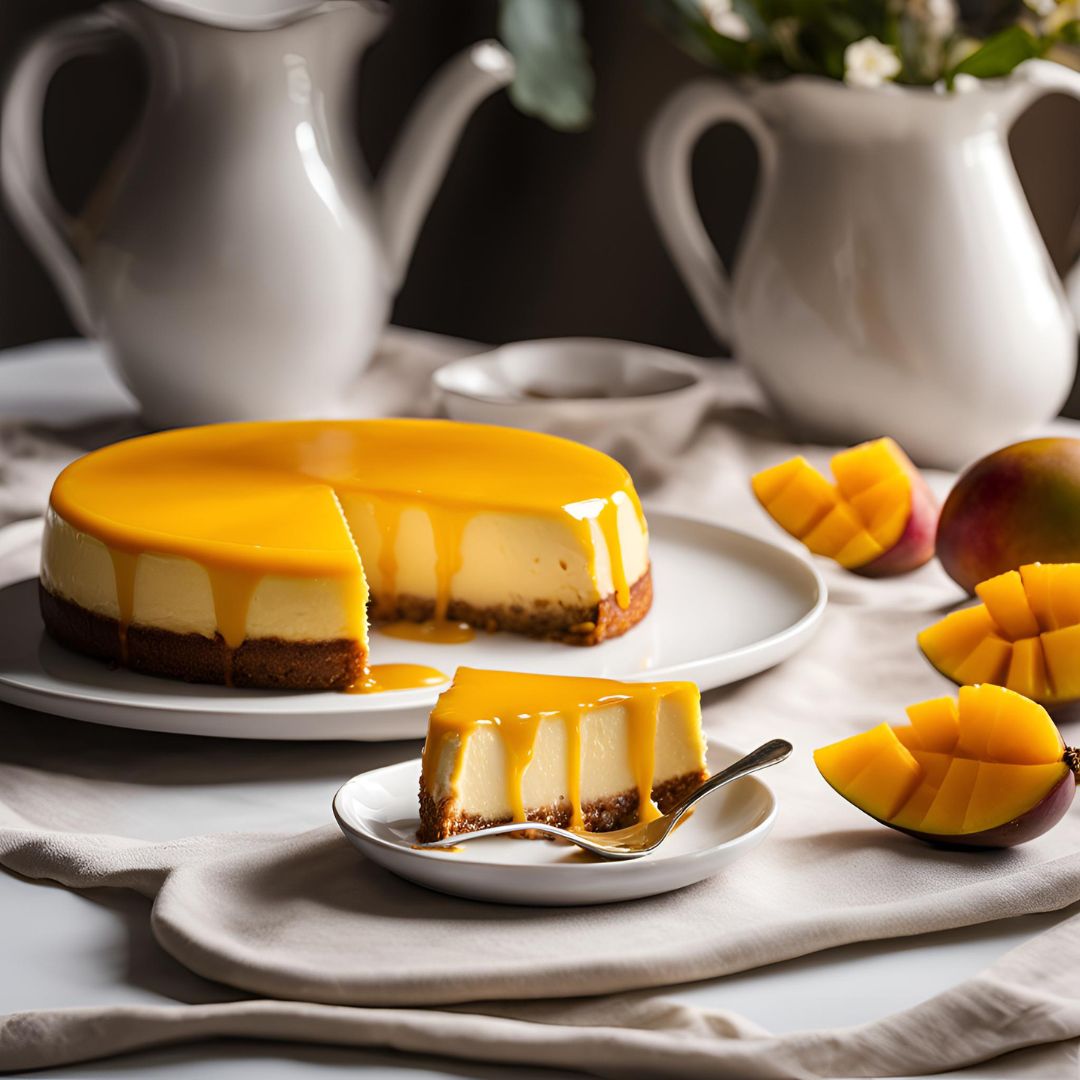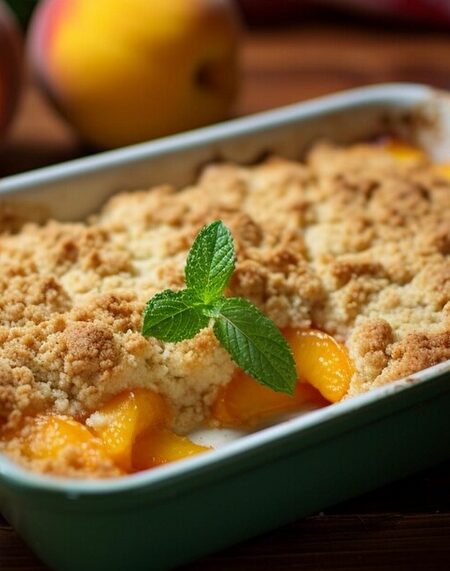Jalebi Recipe: A Sweet Delight. Jalebi—a golden, crispy, syrup-soaked dessert—is one of the most iconic sweets in Indian cuisine. Found in almost every Indian market, festive gathering, and wedding, it has become synonymous with indulgence and celebration. Whether enjoyed as a stand-alone treat or paired with rabri (sweet condensed milk), jalebi brings warmth and comfort to anyone with a sweet tooth. Though its origins are debated, its popularity has spread across various cultures and regions, and it remains a favorite dessert in South Asia and the Middle East.
In this article, we will explore the cultural significance, history, ingredients, and regional variations of jalebi, as well as its role in Indian festivities. So, whether you’re a seasoned fan or a first-time taster, get ready to dive deep into the world of jalebi and discover why it’s a must-try dessert for anyone with a passion for sweets.
A Brief History of Jalebi
The origin of jalebi is shrouded in mystery, but it is believed to have been brought to India from the Middle East or Persia. The Persian version of the sweet is known as zoolbia, and it is thought to have made its way to the Indian subcontinent during the Mughal era. The dish underwent several adaptations as it merged with regional culinary traditions, eventually becoming the beloved jalebi we know today.
While jalebi has roots in both Persian and Arabic cuisines, the Indian version is unique in its flavor and preparation. In the Indian subcontinent, it is typically made using all-purpose flour (maida), sugar syrup, and a variety of spices such as cardamom and saffron. Over time, it became a staple in Indian sweets and spread beyond the subcontinent to regions like Pakistan, Bangladesh, Nepal, and Sri Lanka. The significance of jalebi extends beyond just its taste. It holds a deep cultural meaning in India and is an essential part of festivals like Diwali and Holi. It is often served at weddings, celebrations, and special occasions, symbolizing sweetness and joy.
Cultural Significance of Jalebi
In Indian culture, jalebi is not just a dessert—it is a symbol of festivity and togetherness. It is often associated with joy, celebration, and the pleasure of eating something sweet with family and friends. During Diwali (the Festival of Lights), Holi (the Festival of Colors), jalebi plays a central role in the sweet offerings that are shared among loved ones
In India, jalebi is not just limited to grand occasions; it is also commonly eaten as a quick breakfast or evening snack. Street vendors across the country sell jalebi fresh out of the frying pan, often served with a dollop of rabri (sweetened condensed milk) or dahi (yogurt). This combination of warm, crispy jalebis and cool, creamy rabri is a match made in dessert heaven.
Moreover, the sight of jalebi being made is often a spectacle in itself. The batter is artfully piped into the hot oil in swirling, spiral shapes, and once fried to golden perfection, the jalebi is dunked into warm sugar syrup, absorbing all the sweetness. The aroma of frying jalebi, mixed with the scent of cardamom and saffron from the syrup, evokes a sense of nostalgia and excitement.
The Ingredients of Jalebi
The essential ingredients for making jalebi are simple, but the magic lies in how they are combined. The key elements are:
- All-Purpose Flour (Maida): The base of the jalebi batter. It is mixed with water and sometimes a bit of cornstarch to achieve the desired consistency and crispiness. The flour is also what gives the jalebi its characteristic golden texture once fried.
- Baking Soda: A small pinch of baking soda is added to the batter to help it puff up and form crispy layers while frying. It also contributes to the light and airy texture of the fried jalebi.
- Sugar: The sugar syrup is the heart of the jalebi. Made from simple sugar and water, it is flavored with aromatic spices like cardamom and saffron to give it depth and fragrance. The syrup is heated to the right consistency so that it coats the crispy jalebi perfectly.
- Water: Water is used to make the batter and to prepare the sugar syrup. It helps dissolve the sugar and adjust the batter’s consistency.
- Ghee or Oil: Ghee (clarified butter) or vegetable oil is used for frying the jalebi. Ghee imparts a rich, fragrant taste, while oil ensures that the jalebi doesn’t absorb too much fat. Ghee-fried jalebis are often considered more indulgent and flavorful.
- Aromatic Spices: Cardamom is a common spice used in jalebi to add a warm, fragrant note to the dessert. In some variations, saffron is added to the sugar syrup to give the jalebi a rich color and a slightly floral aroma. Rose water and kewra water are sometimes added to the syrup for an additional layer of fragrance.
Regional Variations of Jalebi
Jalebi has many regional variations that offer unique takes on the classic dessert. Here are a few:
- Imarti (North India): A variant of jalebi that is made in a more intricate pattern, often with a thicker batter. It is typically made during festivals in Uttar Pradesh and Bihar and has a denser texture.
- Zulbia (Middle East): The Middle Eastern version of jalebi, known as zulbia, is made with the same basic ingredients but often differs in shape and size. In some regions, zulbia is deep-fried and soaked in a rosewater-sugar syrup, giving it a distinctive flavor.
- Jalebi-Rabri (India): In some parts of India, particularly in North India, jalebi is served with rabri, a thickened, sweetened milk dessert. The combination of hot jalebi and cool, creamy rabri makes for a rich, indulgent treat.
- Sweetened Milk Jalebi (South India): In certain parts of South India, jalebi is served soaked in sweetened milk, making it even more decadent and syrupy.
- Jalebi with Khoya (Maharashtra): In Maharashtra, jalebi is sometimes served with khoya (reduced milk solids), which enhances its richness and adds a creamier texture to the dish.
Why Jalebi is So Popular
The appeal of jalebi is not just in its flavor, but in its texture and preparation. The deep-fried spirals, crispy on the outside and syrup-soaked on the inside, provide a delightful contrast in every bite. The batter is light and airy, and the sugar syrup makes each piece a burst of sweetness. When paired with rabri or yogurt, jalebi becomes a dessert that satisfies multiple cravings at once—crunchy, creamy, sweet, and rich.
The visual aspect of jalebi also adds to its charm. The golden swirls, often drizzled with bright yellow or orange hues, make it visually appealing, while the aroma of warm, fried jalebis drifting from a street vendor’s stall is enough to tempt anyone nearby.
Conclusion
Jalebi is more than just a dessert—it’s a piece of history, a symbol of celebration, and a treat that connects generations. Whether served at a grand wedding, during a religious festival, or as a simple evening snack, jalebi brings people together with its sweet, crispy, and syrupy goodness. With its rich history, cultural significance, and regional variations, jalebi remains a dessert loved by millions across the world, and its popularity continues to rise with each passing year.
The next time you bite into a jalebi, take a moment to appreciate not just its taste, but also the centuries of tradition and culture it carries. Whether you’re enjoying it fresh from a local vendor or preparing it in your kitchen, jalebi is sure to bring a smile to your face, reminding you of the sweetness of life.
Ingredients: Jalebi Recipe
Items for Jalebi Batter:
- 1 cup all-purpose flour (maida)
- 2 tablespoons cornstarch (cornflour)
- 1/4 teaspoon baking soda
- A pinch of turmeric or a few drops of yellow food color (optional, for color)
- 3/4 cup water (adjust as needed for batter consistency)
- 1 tablespoon yogurt (optional, to aid fermentation)
- 1/2 teaspoon lemon juice (optional, helps with crispiness)
For the Sugar Syrup:
- 1 1/2 cups sugar
- 1 cup water
- 1/4 teaspoon cardamom powder
- 1 teaspoon rose water or kewra water (optional, for fragrance)
- 1/2 teaspoon saffron strands (optional, for color and aroma)
For Frying:
- Ghee or vegetable oil (enough for deep frying)
Cooking Instructions: Jalebi Recipe
Prepare the Sugar Syrup
- In a pan, add 1 1/2 cups sugar and 1 cup water.
- Heat over medium flame, stirring continuously until the sugar dissolves completely.
- Once the syrup starts to boil, reduce the heat and let it simmer for 5-7 minutes. The syrup should thicken slightly but still be of a pourable consistency.
- Add cardamom powder, rose water (or kewra water), and saffron strands (optional) to the syrup and stir well. Set it aside to keep warm.
Make the Jalebi Batter
- In a large mixing bowl, combine 1 cup all-purpose flour (maida), 2 tablespoons cornstarch, and 1/4 teaspoon baking soda.
- Add a pinch of turmeric or a few drops of yellow food color to give the jalebis their signature golden hue (optional).
- Slowly add water, little by little, while mixing, to form a smooth, lump-free batter. The batter should have a flowing consistency, not too thick or runny. Adjust the water as needed.
- Add 1 tablespoon yogurt (optional) and 1/2 teaspoon lemon juice (optional) to the batter. Mix well.
- Let the batter rest for 15-30 minutes. This will allow the ingredients to blend and the batter to rise slightly due to the baking soda.
Prepare to Fry
- Heat ghee or vegetable oil in a deep frying pan or kadai over medium-high heat. The oil should be deep enough to submerge the jalebis. Test the temperature by dropping a small drop of batter into the oil—if it sizzles and rises to the top immediately, the oil is ready.
- While the oil is heating, transfer the batter into a squeeze bottle or a piping bag with a small hole, or use a small cloth bag with a tiny cut at the tip.
Fry the Jalebis
- Once the oil is hot, gently squeeze the batter into the hot oil in circular shapes or figure-eight patterns, making traditional jalebi shapes.
- Fry the jalebis in batches, turning them gently to ensure they cook evenly on both sides. Fry until they are golden and crispy (about 3-4 minutes).
- Remove the fried jalebis from the oil using a slotted spoon and immediately dip them into the warm sugar syrup for about 30 seconds to 1 minute, ensuring they are fully coated.
Serve
- Remove the jalebis from the syrup and place them on a plate lined with paper towels to drain excess syrup.
- Serve the hot jalebis immediately, garnished with some chopped pistachios or almonds if desired. You can also serve them with rabri (sweetened condensed milk) for extra indulgence.
Total Time Breakdown:
- Preparation Time: 10-15 minutes
- Resting Time: 15-30 minutes (for the batter)
- Cooking Time: 15-20 minutes (depending on the batch size and frying time)
- Total Time: 45-60 minutes
Number of Servings:
- This recipe makes about 12-15 jalebis, depending on the size. It serves 3-4 people as a dessert.
Essential Cooking Tips for Jalebi Recipe
1. Achieve the Right Batter Consistency
One of the most crucial steps in making jalebi is getting the batter consistency just right. If the batter is too thick, the jalebis will be dense and hard; if it’s too thin, they won’t hold their shape while frying.
- The batter should be smooth and of a flowing consistency, not too thick or too runny. The ideal batter will flow slowly when piped, creating delicate, crispy swirls in the hot oil. If the batter is too thick, add a small amount of water to thin it down; if it’s too runny, add a little more all-purpose flour (maida)to thicken it.
- To test the batter consistency, drop a small spoonful into a glass of water. If it sinks, it’s too thick; if it floats and holds shape, it’s just right!
2. Control the Oil Temperature
The temperature of the oil is critical for getting jalebis crispy and perfectly fried. Too hot, and the jalebis will cook too quickly on the outside while remaining uncooked inside. Too cool, and they will absorb too much oil and become greasy.
- Heat the ghee or oil on medium heat. Test the temperature by dropping a small piece of batter into the oil—if it rises to the top immediately and sizzles, the oil is ready. You want the oil to be hot enough to fry the jalebis quickly, but not so hot that they burn or brown too fast.
- To maintain a consistent frying temperature, fry jalebis in small batches. If you add too many at once, it can lower the oil temperature and lead to uneven frying.
3. Dip Jalebis in Warm Sugar Syrup Immediately
Once the jalebis are fried, they need to be immediately dipped into warm sugar syrup. The syrup should not be too hot or cold. If it’s too hot, the jalebis will become overly soggy; if it’s too cold, they won’t absorb the syrup properly.
- Keep the sugar syrup at a warm, slightly thick consistency (not too runny) for optimal results. Let the jalebis soak in the syrup for 30 seconds to 1 minute, ensuring that the syrup is absorbed into the crispy layers.
- After dipping the fried jalebis in the syrup, let them drain on a paper towel briefly to remove any excess syrup, so they don’t become too soggy.
4. Use Fresh Ingredients and Additives
The quality of your ingredients plays a significant role in how your jalebis will turn out. Fresh all-purpose flour, sugar, and baking soda ensure the batter rises and crisps up beautifully. Additionally, aromatic spices like cardamom, saffron, and rose water will enhance the flavor of your jalebis.
- Use fresh baking soda as it activates the batter and helps the jalebis achieve a light, airy texture. Fresh spices will add a fragrant depth of flavor to the sugar syrup.
- If you want a richer, more indulgent flavor, consider using ghee instead of oil for frying, as ghee imparts a rich aroma and flavor that complements the sweetness of the jalebi.
5. Practice Piping for Perfect Shape
The shape of jalebi is part of what makes it so iconic. Traditionally, jalebis are shaped in spiral or pretzel-like patterns. The key to achieving the perfect shape is in your piping technique.
- Use a squeeze bottle or piping bag with a small nozzle to pipe the batter into the hot oil. Start by squeezing in circular, spiral shapes or figure-eight patterns, ensuring that each ring is attached to the previous one. The batter should flow smoothly and consistently without breaking.
- If you don’t have a piping bag, you can use a makeshift bag made from a cloth with a small hole at the tip, but ensure it’s strong enough to handle the batter without tearing.
Some More Interesting Recipes –
- Rasgulla Recipe
- Gulab Jamun Recipe
- Pumpkin Chocolate Chip Cookies Recipe
- Chocolate Chocolate Chip Cookies Recipe
- Peanut Butter Cookies Recipe
- Oatmeal Cookies Recipe
- Chocolate Chip Cookies Recipe
- Chocolate Truffles Recipe
- Hot Chocolate Recipe
- Pumpkin Spice Latte Recipe
- Mango Lassi Recipe
- Banana Lassi Recipe
- Sweet Lassi Recipe
Important FAQs for Jalebi Recipe
1. What is the ideal consistency of the batter for making jalebi with this recipe?
The consistency of the batter is crucial in getting the perfect jalebi. It should be smooth, thick enough to pipe into swirls, but not too stiff.
- Ideal Consistency: The batter should be smooth and flow easily, but not runny. When piped, it should create a smooth spiral without breaking or losing shape. If the batter is too thick, add a little water; if it’s too runny, add more all-purpose flour (maida).
2. Why do my jalebi become soggy after frying?
- If your jalebis become soggy, it’s likely due to the sugar syrup being too thick, too cold, or the oil temperature being too low.
- Ensure that the sugar syrup is warm (not hot or cold) when you dip the fried jalebis. The syrup should be of a slightly thick consistency, not watery. Also, make sure the oil is at the correct frying temperature—medium heat works best for crispy, non-greasy jalebis.
3. Can I use oil instead of ghee to fry the jalebi with this recipe?
Yes, you can use vegetable oil instead of ghee for frying jalebis. However, ghee imparts a rich, aromatic flavor to the jalebis, making them more indulgent.
- If you want a more authentic taste, ghee is the preferred choice. If you’re looking for a lighter version, oil works just as well but may not have the same richness.
4. Why did my jalebi turn out soft instead of crispy with this recipe?
Soft jalebis are often a result of improper frying or a watery batter. Ensure the oil temperature is right—medium heat is essential. Too high a temperature will burn the jalebis outside while leaving them uncooked inside, while too low will make them absorb excess oil. Additionally, make sure the batter isn’t too runny and is thick enough to hold its shape when piped.
5. Can I store leftover jalebi made with this recipe?
Jalebi is best enjoyed fresh, but if you have leftovers, you can store them for up to a day. Store jalebis in an airtight container at room temperature. If you want to store them for longer, you can freeze them. To refresh frozen jalebis, warm them up by briefly reheating in the oven or in the microwave with a few drops of water to prevent them from drying out.
6. Can I use food coloring in this jalebi recipe ?
Yes, you can use food coloring to give your jalebis that vibrant golden or orange color, but it’s completely optional. If you want a natural color, you can use a small pinch of turmeric powder for a subtle yellow tint. If you’re using artificial food coloring, add just a few drops to the batter to achieve the desired color.
7. Why is my jalebi not holding their shape following this recipe?
If your jalebis are losing shape during frying, the batter might be too thin, or the oil temperature could be incorrect.
- Solution: Make sure the batter is thick enough to hold its shape while frying, and maintain the right oil temperature (medium heat). Also, make sure you’re piping the batter in smooth, continuous spirals to help the jalebis maintain their structure.
8. How do I make the sugar syrup for jalebi with this recipe?
The sugar syrup for jalebi should be of a one-thread consistency, meaning when you take a drop of syrup between your fingers, it should form a thin thread.
- Basic Sugar Syrup Recipe: Combine 1.5 cups of sugar and 1 cup of water in a pan. Boil the mixture for about 7-10 minutes until it slightly thickens. Add cardamom powder, saffron, and rose water for flavor, and make sure the syrup remains warm when you dip the fried jalebis in it.
9. What can I do if my batter becomes lumpy in this Jalebi Recipe?
Lumpy batter can happen if the flour isn’t mixed properly or if the water is added too quickly. When preparing the batter, add the water gradually and whisk constantly to avoid lumps. If the batter does become lumpy, you can use a hand blender or whisk it well to smooth it out. Be sure the batter is smooth and lump-free before using it.
10. Why do some jalebi taste sweeter than others using this recipe?
The sweetness of jalebi depends on the consistency of the sugar syrup and how long the jalebis soak in it. Ensure the sugar syrup is thick enough to coat the jalebis without making them overly sweet. If the syrup is too thin, the jalebis may not absorb enough sweetness. Also, dip the jalebis for the right amount of time—if they soak for too long, they can become too sweet and soggy.
Jalebi Recipe
Ingredients: Jalebi Recipe
For the Jalebi Batter:
For the Sugar Syrup:
Cooking Instructions: Jalebi Recipe
Prepare the Sugar Syrup
- • In a pan, add 1 1/2 cups sugar and 1 cup water.
- • Heat over medium flame, stirring continuously until the sugar dissolves completely.
- • Once the syrup starts to boil, reduce the heat and let it simmer for 5-7 minutes. The syrup should thicken slightly but still be of a pourable consistency.
- • Add cardamom powder, rose water (or kewra water), and saffron strands (optional) to the syrup and stir well. Set it aside to keep warm.
Make the Jalebi Batter
- • In a large mixing bowl, combine 1 cup all-purpose flour (maida), 2 tablespoons cornstarch, and 1/4 teaspoon baking soda.
- • Add a pinch of turmeric or a few drops of yellow food color to give the jalebis their signature golden hue (optional).
- • Slowly add water, little by little, while mixing, to form a smooth, lump-free batter. The batter should have a flowing consistency, not too thick or runny. Adjust the water as needed.
- • Add 1 tablespoon yogurt (optional) and 1/2 teaspoon lemon juice (optional) to the batter. Mix well.
- • Let the batter rest for 15-30 minutes. This will allow the ingredients to blend and the batter to rise slightly due to the baking soda.
Prepare to Fry
- • Heat ghee or vegetable oil in a deep frying pan or kadai over medium-high heat. The oil should be deep enough to submerge the jalebis. Test the temperature by dropping a small drop of batter into the oil—if it sizzles and rises to the top immediately, the oil is ready.
- • While the oil is heating, transfer the batter into a squeeze bottle or a piping bag with a small hole, or use a small cloth bag with a tiny cut at the tip.
Fry the Jalebis
- • Once the oil is hot, gently squeeze the batter into the hot oil in circular shapes or figure-eight patterns, making traditional jalebi shapes.
- • Fry the jalebis in batches, turning them gently to ensure they cook evenly on both sides. Fry until they are golden and crispy (about 3-4 minutes).
- • Remove the fried jalebis from the oil using a slotted spoon and immediately dip them into the warm sugar syrup for about 30 seconds to 1 minute, ensuring they are fully coated.
Serve
- • Remove the jalebis from the syrup and place them on a plate lined with paper towels to drain excess syrup.
- • Serve the hot jalebis immediately, garnished with some chopped pistachios or almonds if desired. You can also serve them with rabri (sweetened condensed milk) for extra indulgence.






